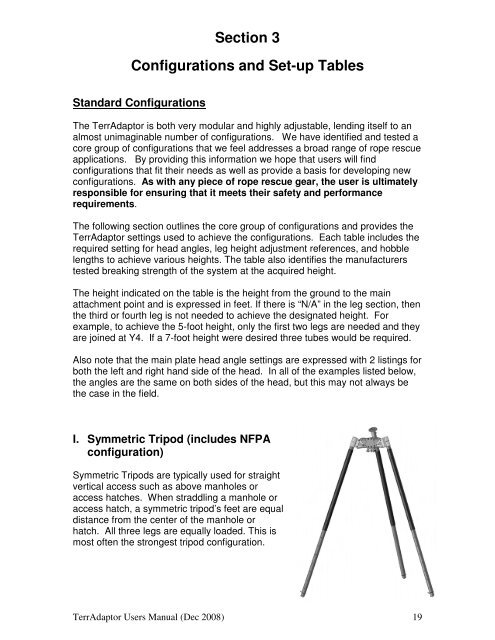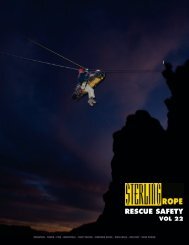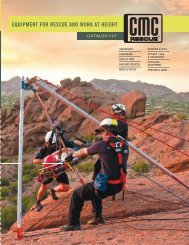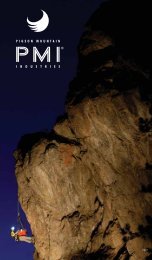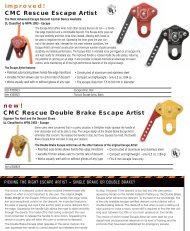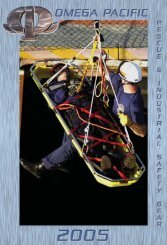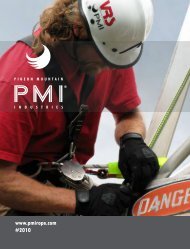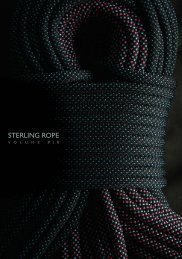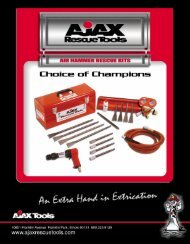Symmetric Tripod - Rescue Consulting Canada
Symmetric Tripod - Rescue Consulting Canada
Symmetric Tripod - Rescue Consulting Canada
You also want an ePaper? Increase the reach of your titles
YUMPU automatically turns print PDFs into web optimized ePapers that Google loves.
Section 3<br />
Configurations and Set-up Tables<br />
Standard Configurations<br />
The TerrAdaptor is both very modular and highly adjustable, lending itself to an<br />
almost unimaginable number of configurations. We have identified and tested a<br />
core group of configurations that we feel addresses a broad range of rope rescue<br />
applications. By providing this information we hope that users will find<br />
configurations that fit their needs as well as provide a basis for developing new<br />
configurations. As with any piece of rope rescue gear, the user is ultimately<br />
responsible for ensuring that it meets their safety and performance<br />
requirements.<br />
The following section outlines the core group of configurations and provides the<br />
TerrAdaptor settings used to achieve the configurations. Each table includes the<br />
required setting for head angles, leg height adjustment references, and hobble<br />
lengths to achieve various heights. The table also identifies the manufacturers<br />
tested breaking strength of the system at the acquired height.<br />
The height indicated on the table is the height from the ground to the main<br />
attachment point and is expressed in feet. If there is “N/A” in the leg section, then<br />
the third or fourth leg is not needed to achieve the designated height. For<br />
example, to achieve the 5-foot height, only the first two legs are needed and they<br />
are joined at Y4. If a 7-foot height were desired three tubes would be required.<br />
Also note that the main plate head angle settings are expressed with 2 listings for<br />
both the left and right hand side of the head. In all of the examples listed below,<br />
the angles are the same on both sides of the head, but this may not always be<br />
the case in the field.<br />
I. <strong>Symmetric</strong> <strong>Tripod</strong> (includes NFPA<br />
configuration)<br />
<strong>Symmetric</strong> <strong>Tripod</strong>s are typically used for straight<br />
vertical access such as above manholes or<br />
access hatches. When straddling a manhole or<br />
access hatch, a symmetric tripod’s feet are equal<br />
distance from the center of the manhole or<br />
hatch. All three legs are equally loaded. This is<br />
most often the strongest tripod configuration.<br />
TerrAdaptor Users Manual (Dec 2008) 19


